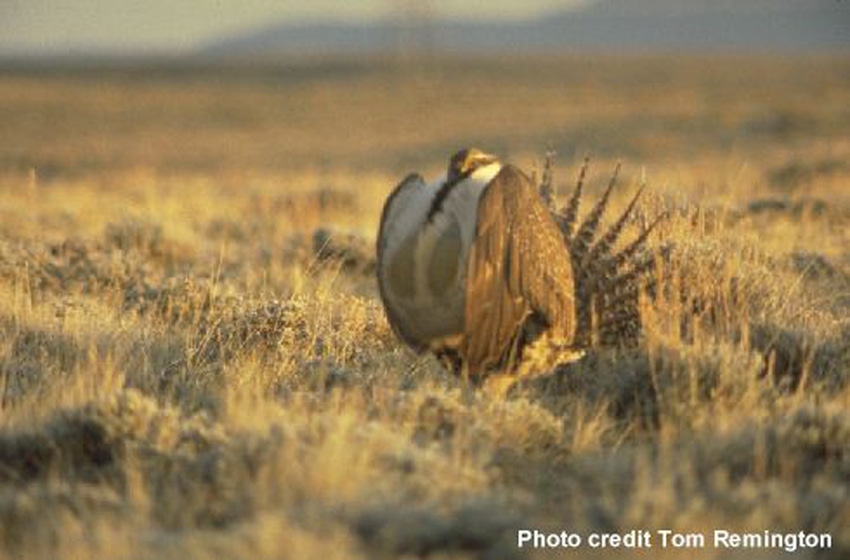California, Nevada ranchers win ESA decision on sage grouse
Ranchers in Nevada and California cheer the recent decision not to list the Bi-State sage grouse population.

The announcement earlier this week that the U.S. Fish and Wildlife Service (USFWS) determined that the Bi-State population of greater sage grouse does not require protection under the Endangered Species Act (ESA) was a jolt of good news to ranchers in Nevada and California. Not only did the announcement show that the hard work and cooperation between private landowners and state and federal wildlife agencies paid off, but ranchers hope the decision is a preamble to a second decision regarding the greater sage grouse across 11 Western states.
“The partnerships working for the Bi-State (population of greater sage grouse) are examples of partnerships and conservation strategies being forged for the greater sage grouse as well,” says J.J. Goicoechea, co-chair of the Nevada Cattlemen’s Association federal lands committee. “The shining example set by stakeholders in the Bi-State region will continue to serve as a road map for the greater sage grouse conservation plans. Nevada producers will continue to make progress toward conserving fragile species if given the tools and flexibility to do so,” he says.
Likewise, California ranchers applaud the decision and the voluntary conservation efforts by landowners. “The California Cattlemen’s Association appreciates the Secretary of the Interior acknowledging those voluntary efforts in her decision to no longer pursue a listing,” the group says in a statement. “We hope that the rationale used on the Bi-State Distinct Population is applied to any future decision regarding the greater sage grouse that has habitat in northeastern California and other large parts of the West.”

70+ photos showcasing all types of cattle nutrition
Readers share their favorite photos of cattle grazing or steers bellied up to the feedbunk. See reader favorite nutrition photos here.
The Bi-State Distinct Population Segment of sage grouse straddles the Nevada-California border, where biologists estimate between 2,500 and 9,000 birds inhabit about 4.5 million acres of high desert sagebrush. USFWS declared the Bi-State population a Distinct Population Segment under the ESA in 2010. In October 2013, USFWS proposed listing the Bi-State sage grouse as threatened under the ESA.
According to Secretary of the Interior Sally Jewell, a key factor in the decision not to list the bird was the development of the Bi-State Action Plan, a conservation plan developed by partners in the Bi-State Local Area Working Group over the past 15 years. The group released the Bi-State Action Plan in 2012 to guide scientifically based conservation efforts that ensure the most important threats were addressed in areas where biological benefits are greatest, says Robert Bonnie, USDA under-secretary of natural resources and environment.
“Ranchers have restored thousands of acres of important sagebrush steppe by carefully removing the early invading pinyon and juniper trees,” Bonnie says. “These actions not only address a primary threat facing the birds, but also benefit other wildlife, such as mule deer, antelope and sage sparrow, and create better forage for livestock.”
While this week’s announcement is good news, it’s only one step in a larger issue. USFWS is concurrently conducting a separate review for the greater sage grouse across its entire 11-state western range. In 2010, USFWS determined the greater sage grouse was warranted for protection, but the action was precluded by higher priorities. A determination on whether or not the species will require protection under the ESA is due Sept. 30, USFWS says.
“While we celebrate this victory for the Bi-State sage grouse, our work isn’t done,” Bonnie says. “Conservation success for the Bi-State sage grouse illustrates what’s possible for the greater sage grouse when all partners voluntarily roll up their sleeves and work together.”
You might also like:
How to treat lump jaw disease in cattle
7 U.S. cattle operations honored for stewardship efforts
9 new hay-making tools for the 2015 forage season
Want your first-calf heifers to breed-back? Start with nutrition
How one farm made room on the ranch for nine sons
About the Author(s)
You May Also Like


.png?width=300&auto=webp&quality=80&disable=upscale)
